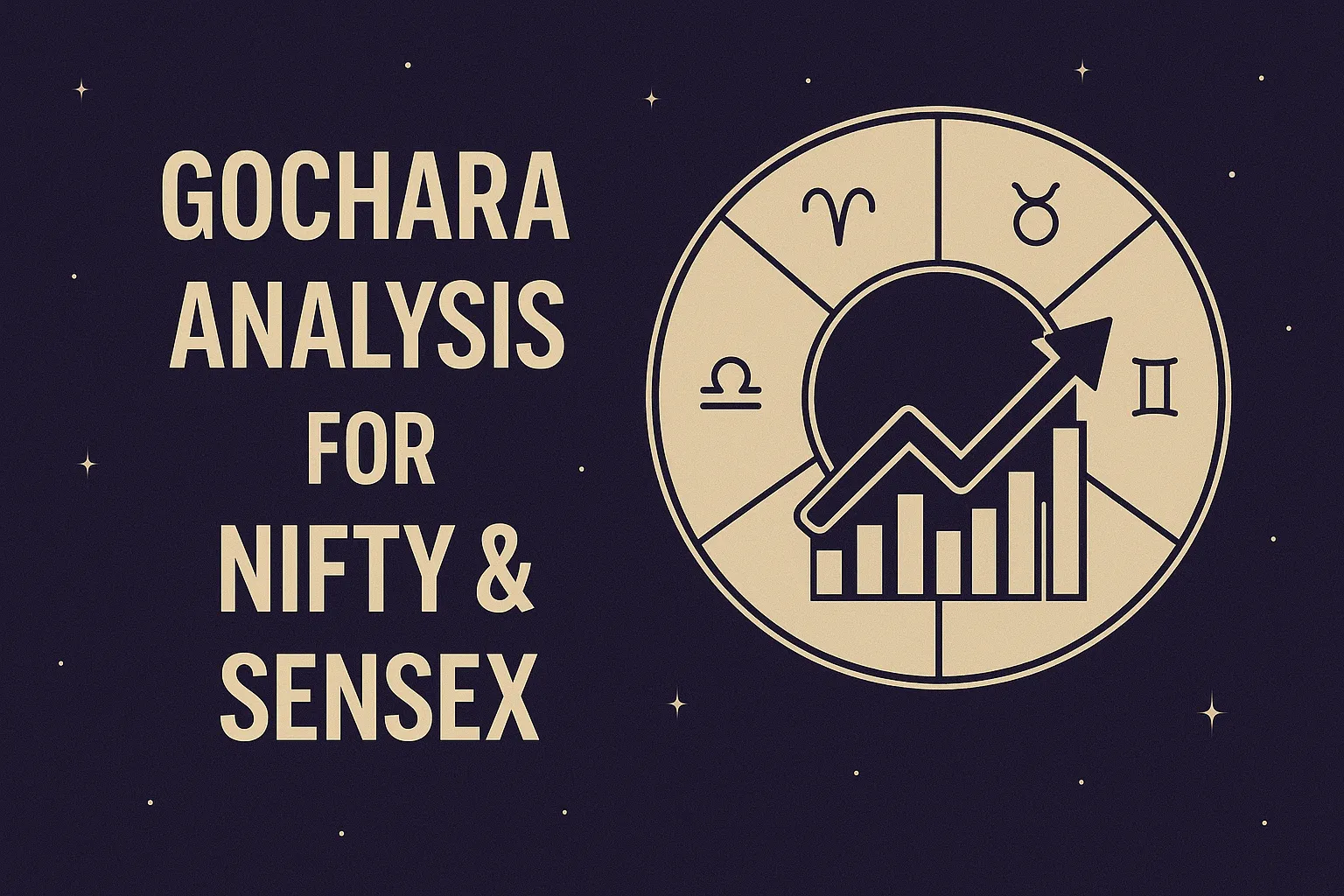Gochara Analysis for Nifty & Sensex
In Vedic astrology, Gochara refers to the ongoing movement of planets through the zodiac. These transits not only affect individuals but also influence collective behavior—making them a valuable tool in forecasting stock market indices like Nifty and Sensex.
This guide explores how Gochara can be used to analyze major Indian indices and predict market trends based on planetary activity.
What Is Gochara in Astrology?
Gochara, or planetary transit, describes the movement of planets from one zodiac sign to another. These transitions affect global events, economic cycles, and human psychology.
When applied to stock markets, Gochara helps forecast:
- Bullish or bearish market phases
- Sectoral shifts in leadership
- Periods of volatility or stability
- Investor sentiment across timeframes
Why Gochara Matters for Nifty and Sensex
Nifty and Sensex represent collective market behavior in India. Since markets are driven by human psychology, and astrology tracks cosmic influence on human behavior, transits can help forecast market mood swings, trend reversals, or rallies.
Key Planetary Transits That Impact Indian Markets
1. Jupiter (Guru) Transits
Jupiter governs growth, optimism, and expansion. When it enters air or fire signs (like Aquarius or Aries), it often brings bullish momentum. Its entry into earth signs (like Taurus or Capricorn) may support long-term accumulation phases.
2. Saturn (Shani) Transits
Saturn slows down markets, brings corrections, and enforces discipline. When retrograde or conjunct with malefic planets, it often causes sell-offs or stagnation.
3. Rahu and Ketu Transits
These shadow planets cause sudden, speculative movements. Rahu’s transit through bullish sectors (e.g., technology, pharma) can inflate bubbles. Ketu may cause declines through uncertainty or fear.
4. Mars and Mercury Transits
Mars brings volatility, especially during conjunctions or oppositions. Mercury, being the planet of commerce and communication, impacts short-term sentiment—especially during retrograde phases.
Sectoral Gochara Analysis
Different planets influence different sectors:
| Planet | Likely Affected Sectors |
|---|---|
| Jupiter | Banking, education, financial services |
| Saturn | Infrastructure, cement, real estate |
| Mercury | Telecom, IT, media, FMCG |
| Mars | Energy, metals, oil & gas |
| Venus | Luxury, auto, fashion, hospitality |
| Rahu | Technology, crypto, speculative assets |
Traders can monitor Gochara changes to shift focus between sectors accordingly.
Gochara and Historical Market Patterns
- April 2020 (Jupiter–Saturn conjunction): Market bottomed and started a bull run after COVID crash.
- April 2022 (Saturn into Aquarius): Start of a consolidation phase; liquidity tightened.
- October 2023 (Rahu in Pisces): Volatility returned, tech stocks began to underperform globally.
These examples highlight how major planetary shifts often align with macroeconomic or index-level turning points.
How to Use Gochara for Nifty/Sensex Forecasting
- Track Upcoming Planetary Changes:
Use a Vedic Panchang or transit chart to know when major transits are due. - Align with Technical Levels:
Gochara gives the “when,” while charts give the “how.” Use both to validate entries or exits. - Monitor Market Psychology:
Jupiter transits = optimism
Saturn transits = fear/consolidation
Rahu/Ketu = euphoria or panic - Watch for Retrogrades and Eclipses:
These periods often bring indecision, sudden reversals, or false breakouts.
Conclusion
Gochara analysis is a powerful Vedic astrology technique that can be applied to forecast movements in Nifty and Sensex. While it doesn’t offer specific price targets, it does help traders and investors prepare for shifts in sentiment, trend direction, and sectoral momentum.
When combined with technical or fundamental analysis, Gochara adds a unique timing layer that many Indian traders find valuable in improving consistency and confidence.
FAQs
1. Can Gochara predict exact Nifty levels?
No, Gochara provides time-based guidance, not exact prices. It’s best used for identifying bullish or bearish phases.
2. Which transit is most bullish for the Indian stock market?
Jupiter entering Aries, Sagittarius, or Aquarius has historically aligned with growth phases.
3. Do eclipses affect market performance?
Yes, eclipses often create psychological uncertainty, leading to low volumes or sharp intraday reversals.
4. How often should I check Gochara for market trends?
Monthly for major trends, and weekly for short-term planning.
5. Is Gochara analysis useful for intraday trading?
It’s more effective for swing or positional trades. For intraday, combine it with Nakshatras or Moon transits.

